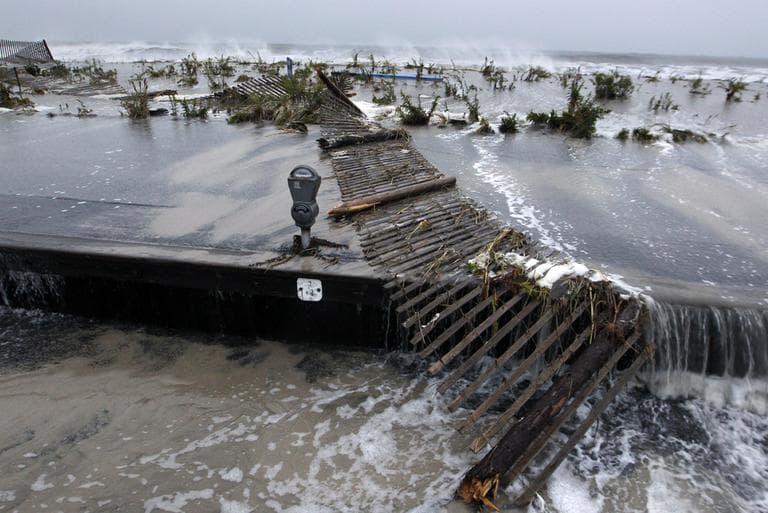Advertisement
The Wrath Of Sandy
ResumeThe wrath of Hurricane Sandy. We’ll track the damage and ask if we’ve learned how to respond to big storms.

It was a made-for-Hollywood storm set-up. “Super storm” Sandy. Thousand-mile wing-span. Bulls-eye: New York City. And then it came. Subways, tunnels, flooded. Wall Street, underwater. A crane down on a billion-dollar high-rise. Whole blocks on fire.
And out to sea, even the HMS Bounty replica, a three-master, went to the bottom. Sandy’s no movie. The impact is real. And it keeps us wondering if we’re up to the parade of wild weather. What we’re learning from it. If we’re causing it.
This hour, On Point: we are sizing up the superstorm, Sandy.
-Tom Ashbrook
Guests
James Barron, reporter for the New York Times.
Frank Marks, director of the Hurricane Research Division at the National Oceanic and Atmospheric Administration.
Marla Marcum, director of programs for the Better Future Project, a grassroots climate change group.
Noël Perry, managing director and senior consultant at Freight Transportation Research Associates.
Sam Brothwell, senior utilities analyst for Bloomberg Industries.
From Tom's Reading List
Washington Post "A strengthening Hurricane Sandy inched closer to land on Monday, pummeling coastal beach towns, while residents of major East Coast cities hunkered down and waited for the steady rains and winds to morph into something more threatening."
Reuters "About 50 million people from the Mid-Atlantic to Canada were in the path of the nearly 1,000-mile-wide (1,600-km-wide) storm, which forecasters said could be the largest to hit the mainland in U.S. history. It was expected to topple trees, damage buildings, cause power outages and trigger heavy flooding."
CNN "Tens of millions of people were hunkered down Monday, bracing for howling winds, torrential downpours and storm surges that authorities warned could bring devastation unlike anything they've seen."
Video
Here's some video of a ConEd power sub station exploding in Manhattan. It resulted in the loss of power to about one quarter million residents in Manhattan.
This program aired on October 30, 2012.
